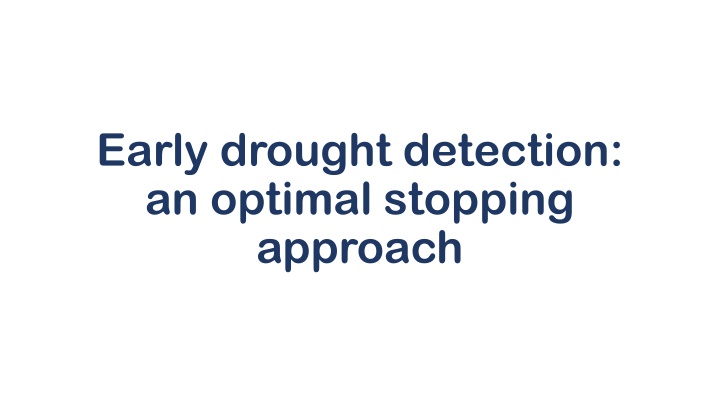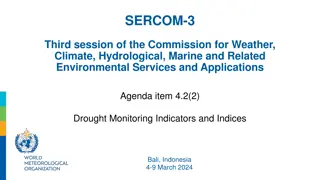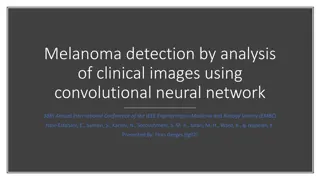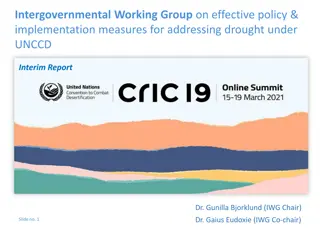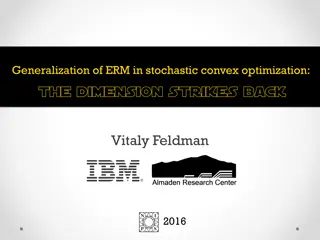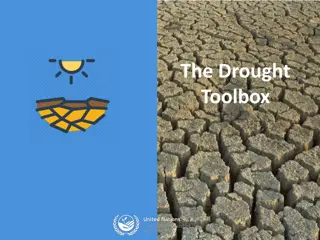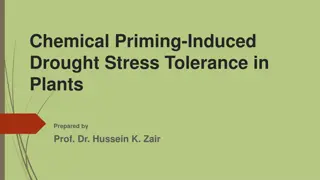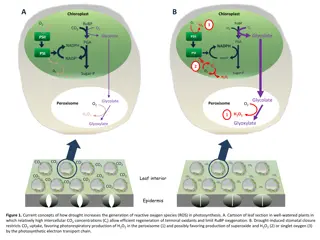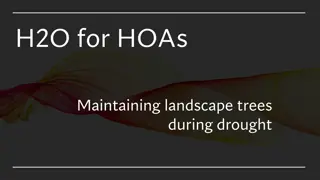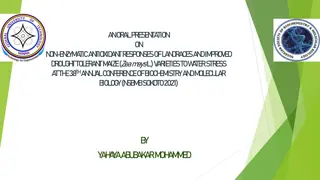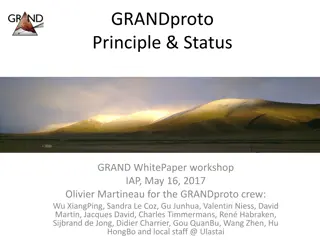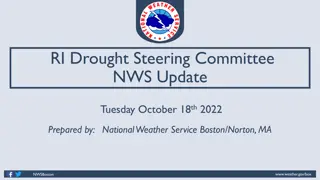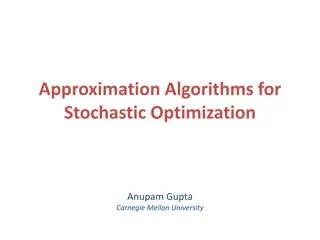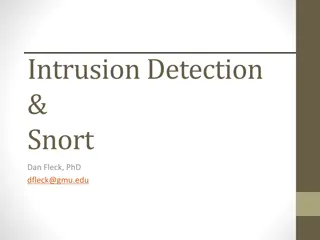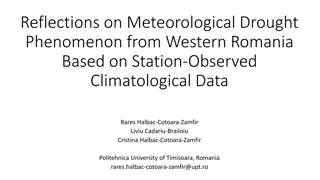Optimal Early Drought Detection Using Stochastic Process
Explore an optimal stopping approach for early drought detection, focusing on setting trigger levels based on precipitation measures. The goal is to determine the best time to send humanitarian aid by maximizing expected rewards and minimizing expected costs through suitable gain/risk functions. Tasks involve choosing a fitting stochastic process, designing appropriate functions, and setting penalties for false alarms and delays in trigger level detection.
Download Presentation

Please find below an Image/Link to download the presentation.
The content on the website is provided AS IS for your information and personal use only. It may not be sold, licensed, or shared on other websites without obtaining consent from the author.If you encounter any issues during the download, it is possible that the publisher has removed the file from their server.
You are allowed to download the files provided on this website for personal or commercial use, subject to the condition that they are used lawfully. All files are the property of their respective owners.
The content on the website is provided AS IS for your information and personal use only. It may not be sold, licensed, or shared on other websites without obtaining consent from the author.
E N D
Presentation Transcript
Early drought detection: an optimal stopping approach
Trigger level Where should the trigger be set? Precipitation measures typically detect drought earlier because rainfall is a primary source. The usefulness of an early warning system is determined by the ratio of hits to false alarms.
Optimal stopping Goal: choose a time to take a particular action, in order to maximise an expected reward or minimise an expected cost. Consider a stochastic process and detect a stopping time at which some gain function is maximised or some risk function is minimised. In this case, find the optimal stopping time (trigger level) when to send humanitarian aids.
Tasks Choose a stochastic process which fits the data. Design a suitable gain/risk function: it may have the general form ?1? ????? ????? + ?2? ????????? ????? Set ?1to penalise false alarms (economical reasons) and ?2to penalise delays in the detection of the trigger level (humanitarian reasons).
